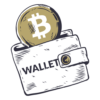NFT currently dominate the digital art and collectibles industries. Imagine purchasing an affordable piece of digital artwork on the Internet and receiving a unique digital crypto token that verifies your ownership of the artwork. Wouldn’t it be wonderful? This option is now available, thanks to NFTs.
Just as everyone around the world considered Bitcoin to be the digital answer to currency, NFTs are currently marketed as the digital solution to collectibles. As a result, the lifestyles of digital artists are altering due to the large sales to a new crypto audience. If you are curious to know what NFT is and how NFT works, you have come to the correct place. Let’s dig into this and find out what all the buzz is about!
What is NFT?
NFT is an abbreviation for Non-Fungible Tokens, which are often constructed using the same programming language as cryptocurrencies. These cryptographic assets or NFTs crypto are built on blockchain technology, to put it simply. They cannot be traded or exchanged in the same manner as other crypto assets such as Bitcoin and Ethereum. Due to its unique qualities, the name NFT signifies that it cannot be substituted or compared with anything else. Physical currency and virtual currencies are fungible, meaning they can be transferred or exchanged for one another.
How Does NFT Work?
The bulk of non-fungible tokens lives on the blockchain of the Ethereum cryptocurrency, a distributed public database that records transactions.
NFTs are individual tokens that contain vital information. They can be purchased and sold much like other sorts of tangible art because the value that they carry is mostly determined by the market and the demand for them. The unique data of NFTs facilitates the verification and validation of token ownership and transfers.
Why Are NFTs Important?
NFTs are an extension of the relatively straightforward cryptocurrency concept. Modern financial systems include complex trading and financing systems for a variety of asset categories, including real estate, lending contracts, and art. NFTs contribute to the reinvention of this infrastructure by facilitating the creation of digital representations of physical assets. Neither the concept of digital representations of physical assets nor the usage of unique identification are novel.
However, when joined with the benefits of a tamper-resistant blockchain of smart contracts, these ideas become a powerful force for change. Possibly the most evident advantage of NFTs is market efficiency. The digitization of a physical item accelerates operations and eliminates intermediaries. NFTs depicting digital or real artwork on a blockchain eliminate the need for agencies and enable artists to communicate with their audiences directly. Additionally, they can improve corporate procedures.
How to Buy NFTs?
Having learned how NFTs work and their unique advantages over other cryptocurrencies, you may like to know how to invest in NFTs. If so, you will need to purchase a few necessities prior to beginning the guide on NFT investing. For instance, you will require a digital wallet to hold your NFTs and cryptocurrencies. You may want to know how to buy NFT with Coinbase wallet or other types of crypto wallet.
Then, depending on the cryptocurrencies your NFT provider accepts, you must purchase cryptocurrency, most likely Ethereum. To buy cryptocurrencies, you can utilize sites such as OpenSea, Coinbase, Binance, Kraken, PayPal, etc. After purchasing cryptocurrency, you can transfer it from the exchange to your crypto wallet. Consider that many exchanges charge a tiny fee as a proportion of your cryptocurrency purchase.
The Future Of NFTs
NFT has increased media exposure and social media rewards for young artists. Recently, Jack Dorsey, CEO and co-founder of Twitter, and Vignesh Sundaresan, commonly known as “Metakovan,” purchased $69.3 million worth of NFT art on Beeple. Dorsey’s very first tweet was the iconic phrase “just setting up my twttr.”
People are willing to spend hundreds of thousands of dollars on NFTs because of their rising popularity and exclusivity. Many crypto industry experts concur with David Gerard, author of Attack of the 50-foot Blockchain, that roughly 40% of new crypto NFT users will choose NFTs as their entry point. As a result of its increasing popularity, NFT may play a larger role in the digital economy in the near future.

